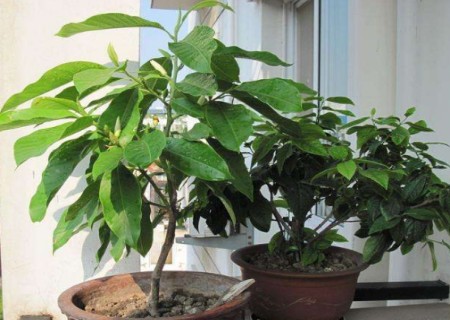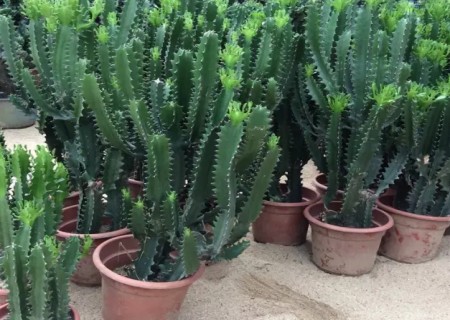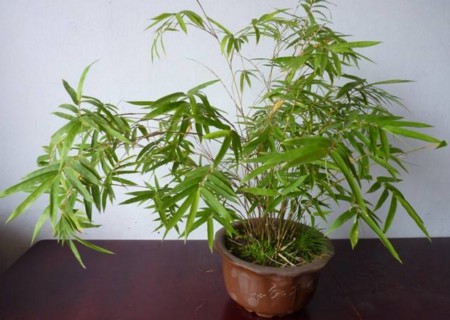Culture methods of family potted white orchids
"The smoke of the wind breaks at dawn, and the flowers are still low and white; a charm is not easy to send, and the fragrance is all over the world." This is the description of Bai Lan Hua by Yang Wanli, a patriotic poet of the Southern Song Dynasty. Magnolia is a traditional famous flowers and trees, beautiful white color, but also has a fragrance, flowering time like snow waves clouds, very spectacular. The north also has for pile scene potted, now all over the world has introduced cultivation.
White orchids are fragrant flowers. Its leaves are green, white as jade, fragrant if orchid, flowering long, environmental conditions are appropriate, can bloom constantly throughout the year. But it is afraid of drought, fear of waterlogging, fear of cold, fear of alkali, in the northern region is regarded as more delicate difficult to raise flowers. So, how to raise potted white orchids in the family? The following is an introduction to the cultivation methods of white orchids.

1. Soil
Family potted white orchids should be cultivated in loose, breathable and humus-rich soil. Usually choose a good permeability earthen basin, purple sand basin (jar) or plastic basin with more bottom holes. The soil in the basin should have a certain amount of granular soil of different sizes to facilitate water seepage and ventilation.
2. Light
From March to April every year, the pots and vats planted with white orchids are removed from the outside and placed in a sunny place. Summer temperature is high, should choose sunshade net or build a simple shade, make white orchid can shine to the sun in the morning, can avoid summer afternoon bright light (lest because insolate and burn branch, leaf). Move outdoors before and after summer, and put it in a sunny and ventilated place with sunshine for more than 6 hours. Only sufficient light, in order to grow well, insufficient light will be excessive long branches and leaves, less flowering and even no flowering. And in the hot summer season, the intensity of sunlight, should be a little shade, lest the sun burns leaves and tender stems.
3. Temperature
It is not cold-resistant. Except for South China, other areas should enter the room for maintenance in winter. The minimum room temperature should be kept above 5℃. It is appropriate to leave the room from Qingming to grain rain. Do a good job of freezing and keeping warm. The indoor temperature should be maintained above 12 degrees during the day and not lower than 6 degrees at night. Otherwise, it will be vulnerable to low temperature and cold damage. Air circulation, and keep the basin soil moist, can safely winter.
4. Watering
Proper watering is the key to maintaining good white orchids. White orchids should not be watered too frequently or excessively. As long as you see white orchid leaves drooping, you should water them. Pervious irrigation two or three times a month in autumn and once or twice a month in winter.
5. Fertilization
During the vigorous period of white orchid growth (usually May or July or August of each year), flower fertilizer should be applied to white orchid every half month or so, or a little nitrogen, phosphorus and potassium compound fertilizer should be applied at intervals of about 20, 2 g to 6 g each time. From the beginning of outdoor removal to the end of June, alum fertilizer water is poured every 7-10 days to make the soil slightly acidic. Flowering can also increase the application of quick-acting phosphate fertilizer-time, so that its spit fragrance endless.
6. Change the basin
According to the crown size and age of white orchids, the pots and vats of appropriate size should be replaced to facilitate the vigorous growth of plants. When operating, you should wait for the basin soil to dry slightly, tilt the basin (jar) slowly (or upside down), hold the basin with one hand, grasp the plant with the other hand, pour out the white orchid and move it into the new basin. A small amount of loose soil should be placed in the new pot (jar) in advance, and then water should be poured thoroughly to stabilize the planting.
7, pruning
Before entering the room, dead branches, diseased branches, excessive proud branches and over-dense branches should be removed to minimize the nutrient consumption of the plants; old leaves at the lower part of the branches can be properly removed when leaving the room, which is conducive to promoting the growth of new branches. In addition, attention should also be paid to aphids and other harmful shoots, which must be prevented and controlled in time.
8. Diseases and pests
The main diseases and insect pests of white orchids are chlorosis, anthracnose, spider and scale insects. Anthracnose can be treated by spraying 50% carbendazim WP 500 times or 50% thiophane WP 500 times every 5-10 days. Red spiders, scale insects once found, can be used to scrape bamboo. Red spiders can be controlled by spraying with 20% dicofol 1000 times solution or 50% trichlorothion 1000 times solution.
White orchids like sunny and humid environment, although white orchids flower fragrance but very difficult to raise, but if we understand their growth habits and breeding methods, then believe that breeding white orchids will become very easy.
The soil should be suitable: fertile, loose, breathable, well-drained culture soil.
Water should be appropriate: white orchids are both afraid of waterlogging and drought flowers, spring and autumn watering should not be more, summer daily watering and must be watered at night, winter 10 days or so once.
Fear of alkali: white orchids like acidic soil, often irrigated with fermented rice washing water, the best effect.
Fear of thick fertilizer: fertilizer will make it reverse osmosis, causing plants "physiological drought", light wilting, heavy burning. Remember-sparingly, often, and in the evening.
Time: 2019-05-31 Click:
- Prev

Culture method of potted keel flower
The keel is a climbing shrub with a sword-like stem, large flowers and fireball-like fruit, with emerald green stems, large and white flowers and red fruit, which are widely planted in the tropics, so they are planted in the corners and borders of the exhibition greenhouse to show the tropical rain forest scenery.
- Next

What about the yellowing leaves / yellowing leaves of Phyllostachys pubescens
Bamboo is a common plant, but it is a symbol of integrity and modesty in our country. listed in the flowers, bamboo symbolizes the elasticity of life, the moment it breaks out of the earth, just like a baby in order to get a chance to survive. desperate to break away from the mother, get a new life, bright moon like frost, good wind like water
Related
- Fuxing push coffee new agricultural production and marketing class: lack of small-scale processing plants
- Jujube rice field leisure farm deep ploughing Yilan for five years to create a space for organic food and play
- Nongyu Farm-A trial of organic papaya for brave women with advanced technology
- Four points for attention in the prevention and control of diseases and insect pests of edible fungi
- How to add nutrient solution to Edible Fungi
- Is there any good way to control edible fungus mites?
- Open Inoculation Technology of Edible Fungi
- Is there any clever way to use fertilizer for edible fungus in winter?
- What agents are used to kill the pathogens of edible fungi in the mushroom shed?
- Rapid drying of Edible Fungi

